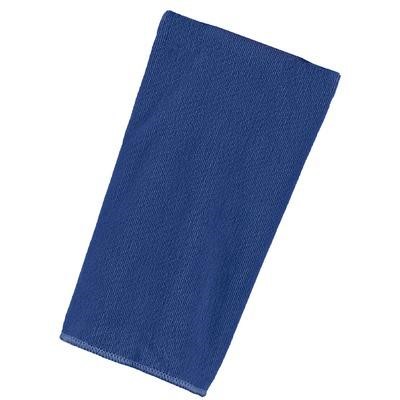| Biz ancak bu sayfa şu anda Google Translate kullanarak çevrilen makine, mümkün olduğunca çok dilde web sitemizi lokalize için çaba. | yakın |
-
-
ürünler
-
kaynaklar
-
destek
-
şirket
-
Fiziksel PC Bakım A GuideA Guide to Physical PC Maintenance
Tarafından Steve Horton Haziran 12, 2013clean, maintenance, pc1 YorumTeknisyenlere, PC’nizi korumak korkutucu bir görev gibi gelebilir. Kimse ne yaptıklarını bilmediklerinde, donanımlarına zarar vermek ya da etrafta dolaşmak istemez – ama neyse ki, bir bilgisayar inşa edildikten sonra, bunu sürdürmek çok zor değildir. Bu, bir masaüstünün temiz tutulması için bir kılavuzdur – dizüstü bilgisayarlar söz konusu olduğunda, yapmanız gereken tek şey ekranınızın güzel ve parlak olmasını sağlamaktır ve anahtarlarınız ve havalandırma delikleriniz aşırı ısınmayı önlemek için toz haline getirilmiştir.
Fiziksel PC bakımının yönlerini gözden geçirelim.
Klavyeyi temizleme
Bu kolay olmalı.
Anahtarlar arasındaki tozdan kurtulmak için bir toz bezi veya bir basınçlı hava kullanın. Bu basit bakım için tuşlara basmanıza gerek yoktur – ancak tuşların altını temizlemeye karar verirseniz, dikkatli bir şekilde çıkarmanız gerekir, böylece mekanizmayı oluşturan plastik ve klipsleri kırmazsınız ve fırçalar kullanırsınız ve anahtarların altında toplanan tüm muck çıkması için sıkıştırılmış hava olabilir. Ultrabook ya da başka bir dizüstü bilgisayar ile ayrı tuşlar kullanıyorsanız, anahtarlarınızı çıkarmayın.
Diğer çevre birimleri için basit bir cila iyi bir şey yapar. Elektroniklerinizi temizlerken su veya büyük miktarda sıvı kullanmamaya dikkat edin.

Mikrofiber bezlere bir örnek – banyo havlusu gibi görünenleri kullanmayın.Monitörü temizleme
Seçtiğiniz bir ekran temizleme spreyi alın ve bir mikrofiber bez satın alın. Her çeşit ekranı temizlemek için mikrofiber bezler kullanmanız önemlidir, çünkü diğer bezler ekranınızı mikroskobik seviyelerde, özellikle de doku kağıdına zarar verebilecek olan küçük kağıt parçalarıyla çizecek şekilde zarar verebilir.
Ekranınızı temizlerken nazik olun. Çok fazla basınç cama veya arkasındaki bileşenlere zarar verebilir.

Bilgisayarınızı temizleme
Vaka temizliği, beklentilerinize karşılık gelir – bağlantı noktalarından uzak durun ve PC’nizi tatmin edecek düzeyde bir düzeye getirin. İşyerinde çok fazla temizleme spreyi veya çok fazla güç kullanmadığınızdan emin olun ve vakayı açmaya ve bu eğiticinin ciddi kısımlarına girmeye hazır olduğunuzda, bilgisayarınızı kapatın, güç kaynağı da dahil olmak üzere her şeyi fişten çekin ve bilgisayarınızı elektrik enerjisinden kurtarmak için güç düğmesini üç saniye basılı tutun.
Davanızı açmak için ya bir tornavida ya da önceden var olan bir tutamaç kullanmanız gerekir – durumunuzu açmak için tam olarak neyin gerekli olduğunu belirlemek için üreticinizin web sitesine başvurun.
İçeri girdikten sonra, bileşenlerinizi temizlemek için basınçlı hava kabınızı kullanın. Endişelenmeyin – basınçlı hava herhangi bir su içermediğinden hiçbir şey zarar görmeyecektir. Toz için her köpüğü ve kılıcı aldığınızdan ve çıplak elinizle bilgisayarınızın herhangi bir parçasına dokunmadığınızdan emin olun. Belirli bileşenleri temizlemek için, antistatik bir bilekliğe sahip olduklarından emin olun, bunları yuvalarından çıkarmadan önce ve sıkıştırılmış havayı kullanarak bunları toz haline getirin. Bu bileşenlerin ne olduğunu ve nasıl yeniden takılacağını biliyorsanız, yalnızca bu ileriye dönük adımı atınız – aksi halde, atlayınız.
RAM çubukları, sabit sürücü kasaları ve grafik kartlarının çıkarılması ve tozlanması güvenlidir. İşlemciler, güç kaynakları ve diğer bileşenler değildir.
Egzoz ve fanlara özellikle dikkat edin – basınçlı havayı kullanarak fanları tozlayın ve egzozdan gelen tıkanma tozunu temizlemek için kuru bir bez veya bir toz bezi kullanın.
Bundan sonra, bilgisayarınızı kapatın ve her şeyi tekrar takın.
İşe geri döndün!
Was this post helpful?YesNoÜcretsiz Sürücü Güncellemeleri
Daha iyi keyif almak için sürücülerinizi 2 dakikadan kısa sürede güncelleyin bilgisayar performansı - Ücretsiz.
Ücretsiz Sürücü Güncellemeleri
Daha iyi keyif almak için sürücülerinizi 2 dakikadan kısa sürede güncelleyin
bilgisayar performansı - Ücretsiz.
Cevap bulamadınız mı?Dünyanın dört bir yanından uzmanların eden bir soru sormak ve hiçbir zaman bir cevap alırsınız.most relevant yeni makaleler Pinterest'te Sabitle